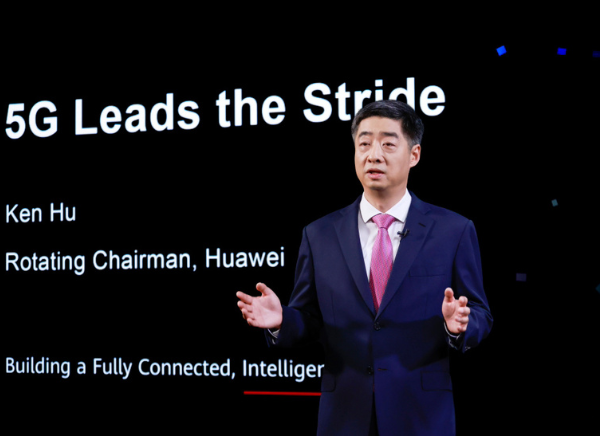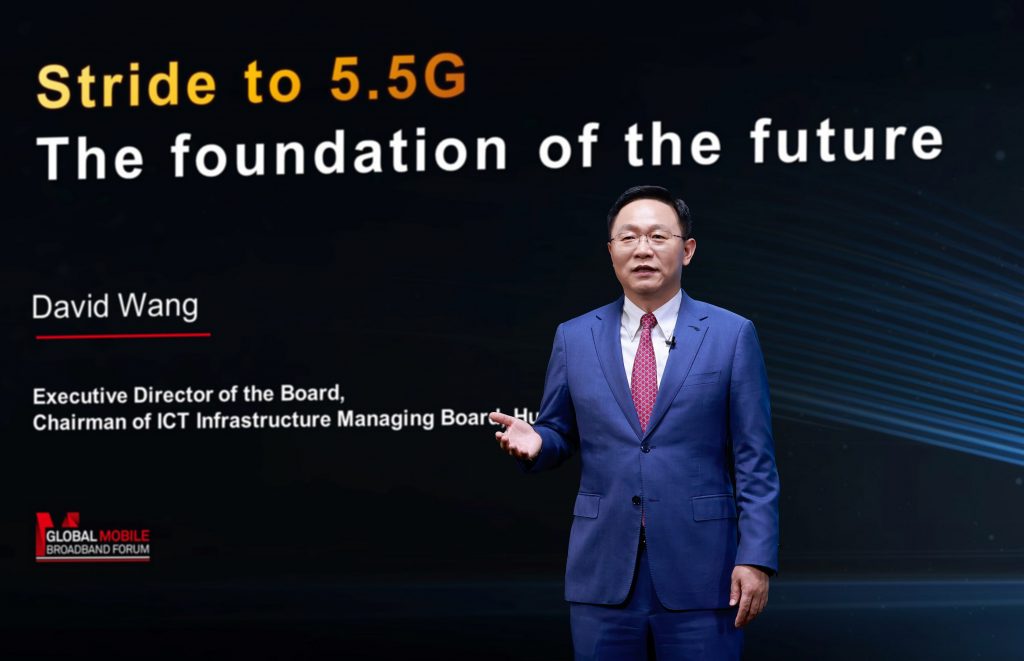
Just four years since the first commercial 5G network went live, the 5G industry ecosystem is almost mature. As of October 2022, more than 230 carriers around the world have launched commercial 5G services. In total, the industry has set up over three million 5G base stations, serving more than 700 million subscribers.
Industry digitalization is the next wave of global economic development. As a key enabler of digital transformation, 5G opens up a world of new opportunities. But the ICT ecosystem needs to work together to make the most of them.
B2B 5G applications are poised to become the fastest growing revenue stream for carriers. 5G is enabling new service scenarios, applications, and business models, paving the way for unprecedented growth opportunities in the industry.
To push 5G to the next level, Huawei worked with carriers and industry partners to propose four features for 5.5G, the next evolution of 5G technology: 10 Gbps downlink, 1 Gbps uplink, support for 100 billion connections, and native intelligence.
As we approach the intelligent world of 2030, home broadband speeds will reach 10 Gbit/s, marking a huge improvement over today’s 1 Gbit/s experience. Currently, homes have an average of 5 to 20 devices connected to their Wi-Fi networks. However, this is set to change as smart home devices see broad adoption, which will drive this number up to 150 to 200. It will therefore be essential that fiber can reach every room of every home.
By 2030, Wi-Fi networks will also be capable of delivering several 10 Gbit/s experiences for mid- and large-sized campuses, and will need to support intelligent operations and management. Micro and small enterprises will need Wi-Fi networks that can deliver large bandwidth, premium experiences, and one-stop intranet services. Industrial Internet will require a bandwidth higher than 10 Gbit/s and a latency lower than one millisecond. Enterprises will adopt a multi-cloud strategy that requires networks to dynamically adjust routing. Driven by green development and automation, we will see 10-fold increases in network capacity, energy efficiency, and O&M efficiency.
The next evolution in 5G technology, 5.5G, can cater to this explosion in connected devices. 5.5G will upgrade network capabilities by 10X, support 10 Gbps experience, and enable 100 billion connections and native intelligence for numerous services. In short, 5.5G is necessary to build an intelligent world.

Huawei, together with the GSMA and GTI, recently hosted the Global Mobile Broadband Forum (MBBF) 2022 in Bangkok, Thailand, to explore, among other topics, how Huawei is working with operators and industry partners to define 5.5G industry standards and propose 5.5G network features.
Huawei Rotating Chairman, Ken Hu said: “5G has grown faster than any previous generation of mobile technology. In just three years, we’ve seen solid progress in network deployment, consumer services, and industry applications.
“5G is in the fast lane,” he continued, “and we should all be proud of the progress we’ve made. But there’s more we can do to maximize its value. We need to work together to fully unleash the power of 5G networks and expand into services like cloud and system integration. Together, we can drive leapfrog development in 5G networks, applications, and the industry as a whole.”
During the Forum, David Wang, Huawei Executive Director of the Board and Chairman of ICT Infrastructure Managing Board noted how, through concerted efforts, the industry has made significant progress and is ready to make the leap to 5.5G. To hit this milestone, Wang called upon all industry players to prepare on all fronts so that the world can move faster towards the 5.5G era and eventually build a better, intelligent world together.
Wang highlighted various breakthroughs after two years of 5.5G evolution. First, 5.5G standardization is on track, making it more than just a vision. Second, the industry has made breakthroughs in key technologies for 5.5G, ultra-large bandwidth, and extremely large antenna array (ELAA) can now deliver a 10 Gbit/s experience. Third, the industry has a clear vision for the IoT landscape, noting that three types of 5.5G-enabled IoT technologies supported by 5.5G, namely NB-IoT, RedCap, and passive IoT, are developing rapidly and will support numerous IoT connections.
Moving forward, Wang noted the industry needs to tackle five new areas – standards, spectrum, products, ecosystems, and applications to ensure 5.5G success.
Huawei believes that ICT will be pivotal to building a greener world and promoting the sustainable development of society at large. It develops network solutions for green sites, networks, and network operations, as well as more efficient and low-carbon energy solutions. Also works with its ecosystem partners to deploy more energy-efficient ICT infrastructure with a goal to make ubiquitous connectivity a greener possibility.
At the forum, Huawei launched the RuralLink solution. Through site-level innovations, this solution enables green sites, site simplification, and easy evolution. This makes it possible for operators to build mobile networks that allow for positive business cycles in rural areas while connecting these who are still unconnected. Huawei’s RuralLink solution uses unique innovative technologies to solve the difficulties associated with communications.
Huawei first proposed an outline for 5.5G in 2020, and 3GPP officially named the concept “5G-Advanced” in 2021. As an upgraded version of 5G, its features will power future industries such as the IoV, IoT, robotics, and manufacturing, and serve as a key driving force of the digital economy.
